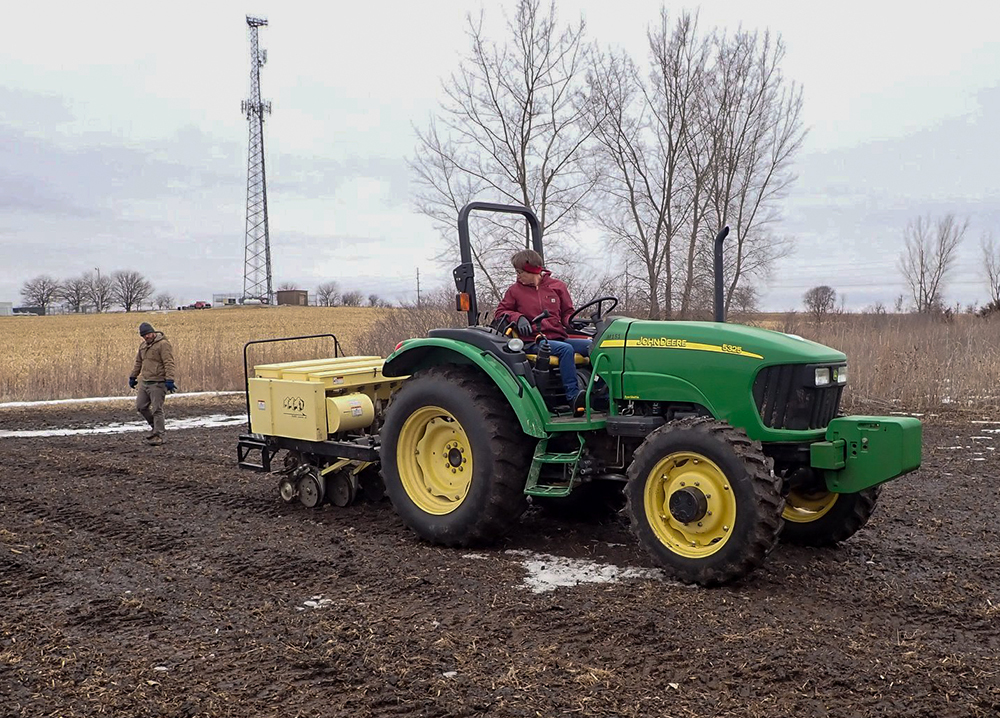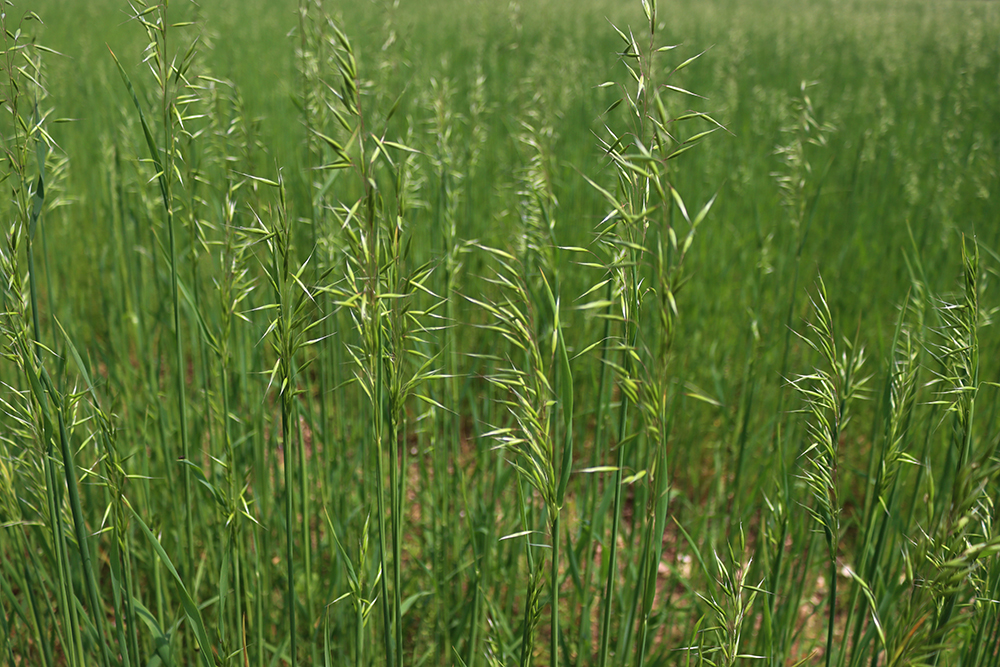Timing
Table of Contents
May and June are ideal for seeding, but road construction during these months limits opportunities. The following provides suggestions for protecting slopes and improving seeding success throughout the year.
January to Mid-March

Winter months occasionally present windows of opportunity for frost seeding if the soil temperature is around freezing (32°F), daytime temperatures are above 32°F, and nighttime temperatures are below 32°F. Frost seeding involves spreading seed over bare soil made friable (loose or porous) by a cycle of freezing and thawing. Results can be good, but opportunities for frost seeding can be brief, and adhering to the following tips can increase the chances for success:
- Be ready to jump on it when the conditions are right.
- Include oats as a cool-season nurse crop.
- Do not frost seed on areas covered with ice or snow.
- Occasionally, native seed is sown on top of snow. Technically, this is not frost seeding but can be an effective winter seeding method for relatively level sites.
- Frost seeding on slopes is not recommended.
Late March Through April
If the ground is not frozen or too sloppy, this can be a good time for seeding. Warm-season grasses will not germinate until soil temperatures reach 60°F. Oats should be included as a cool-season nurse crop.
May and June
This time of year provides the best soil temperature and moisture conditions for germination and survival of warm-season species, including most prairie grasses and wildflowers.
July and August

Although every county can point to instances of successful plantings during these months, hot and dry summer conditions are generally less favorable for planting natives. Temporarily seeding a quick-growing stabilizing crop such as oats (see the Cover Crops section in this chapter) can be considered during these months, followed by permanent native seeding in the fall or the following spring.
If local circumstances dictate that natives must be seeded in July and August, following these tips can increase the chances of success:
- Drilling, rather than hydroseeding, will allow for maximum seed-to-soil contact.
- Increase the seeding rate by 25%.
- Include appropriate nurse crops.
- Mulch with straw and crimp or tack straw into place.
September and October
Native seed germinating this late in the season is unlikely to develop enough root reserves to overwinter (i.e., live through the winter). Yet some of these plantings succeed, perhaps because a lot of the seed does not germinate until spring. While more research is needed to know what contributes to successful planting during these months, the following tips are worth considering:
- Erodible sites must be stabilized with winter wheat.
- Increase the seeding rate by 25%.
November and December
Dormant seeding involves seeding when the ground is not yet frozen but cold enough that seed will not germinate until the warmer spring months. The majority of native seed will remain dormant over winter. It is considered a good option on level ground but is more complicated on erodible slopes. Cover crops seeded this late will not provide erosion control until spring. While some forb species do better when dormant seeded, some native grass seed planted at this time will deteriorate over winter. Some tips for dormant seeding:
- Erodible sites must be stabilized with winter wheat.
- Increase the seeding rate by 25%.
Roadside Real Talk
Insights from Roadside Managers and Other Professionals
Timing is everything. Watch the weather, and don’t just seed a site to get it off the list.
—Joe Kooiker, Story County, 2024
Ideally, we begin dormant seeding in October or November once the 4-inch soil temperature reaches 50 degrees, but if erosion is a concern or there is an issue regarding a regulatory permit, we will seed earlier and may increase the seed rate some and hope for dormant seed.
—Jim Uthe and James Devig, Dallas County, 2024
I try not to seed in August, September, or early October. I prefer to wait until November, then drill into a cover crop and mow the following spring. If weather conditions deteriorate in November, I can still seed in the spring. However, there are many factors that can influence when seeding gets done, including size of project, time available, topography, etcetera. Small sites and those that are not conducive to drilling typically get seeded as soon as possible. I don’t intentionally wait to frost seed. I might consider it, but only on flat areas in perfect conditions.
—Wes Gibbs, Jones County, 2024


